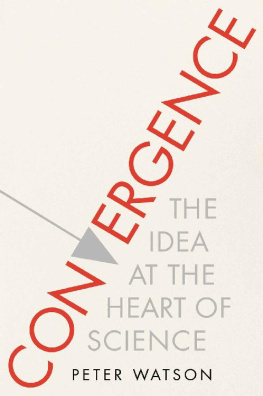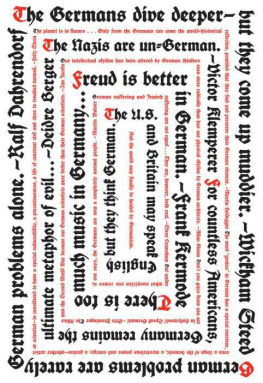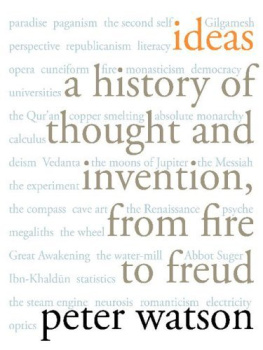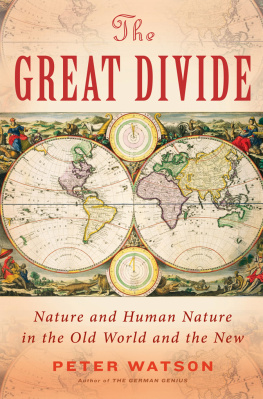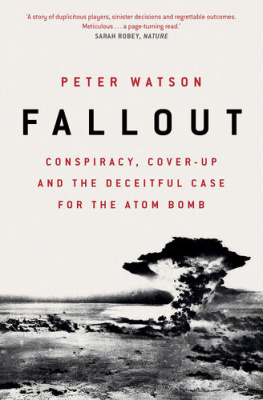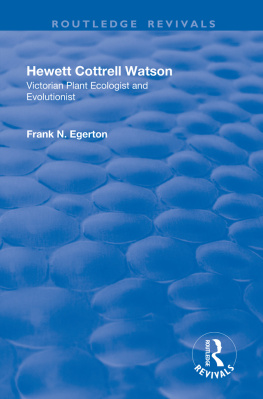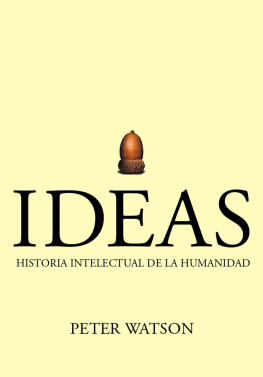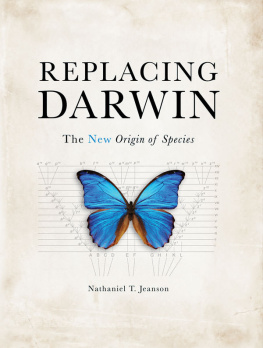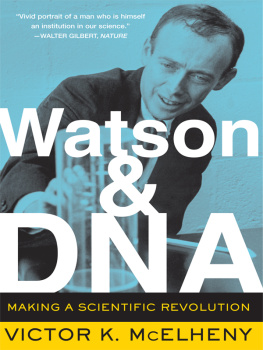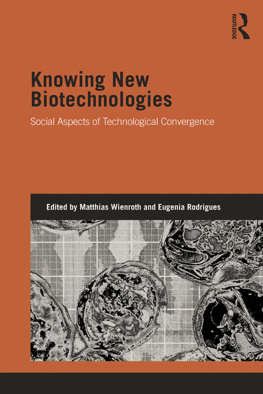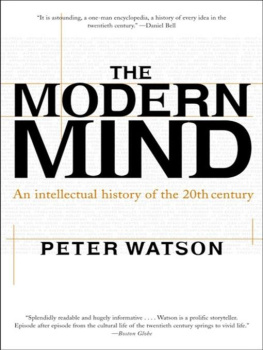Thank you for downloading this Simon & Schuster eBook.
Join our mailing list and get updates on new releases, deals, bonus content and other great books from Simon & Schuster.
C LICK H ERE T O S IGN U P
or visit us online to sign up at
eBookNews.SimonandSchuster.com
CONTENTS
For David Henn and David Wilkinson
It is a wonderful feeling to recognize the unity of a complex of phenomena that to direct observation appear to be quite separate things.
A LBERT E INSTEIN
The history of science teaches us again and again how the extension of our knowledge may lead to the recognition of relations between formerly unconnected groups of phenomena.
N IELS B OHR
By tracing the arrows of explanation back toward their source, we have discovered a striking convergent patternperhaps the deepest thing we have yet learned about the universe.
S TEVEN W EINBERG
We are at a moment of great convergence, when data, science, and technology are all coming together to unravel the biggest mystery yetour future, as individuals and as a society.
A LBERT -L SZL B ARABSI
We shall not rest satisfied until we are able to represent all physical phenomena as an interplay of a vast number of structural units intrinsically alike.
A RTHUR E DDINGTON
Nature is pleased with simplicity.
I SAAC N EWTON
Everything is made of one hidden stuff.
R ALPH W ALDO E MERSON
All of us secretly wish for an ultimate theory, a master set of rules from which all truth would flow.
R OBERT L AUGHLIN
Reality, in the modern conception, appears as a tremendous hierarchical order of organised entities, leading, in a superposition of many levels, from physical and chemical to biological and sociological systems.
L UDWIG VON B ERTALANFFY
As scientific knowledge advances, previously unrelated phenomena are found to be related.
A USTEN C LARK
The universe is orderly. It has certain built-in characteristics that came we know not whence or why but that are determinable and that have not changed during the course of recoverable history.
G EORGE G AYLORD S IMPSON
Reductionism is the primary cutting tool of science.
E DWARD O. W ILSON
We have inherited from our forefathers the keen longing for unified, all-embracing knowledge.
E RWIN S CHRDINGER
The search for the elementary ingredients making up the universe and the deepest laws governing their interactions may be a search that one day draws to a close. The deeper we look, the simpler and more unified the laws become, and there may well be a limit to this process.
B RIAN G REENE
Biology presupposes physics but not vice versa.
R UDOLF C ARNAP
Once there was physics and there was chemistry but there was no biology.
J ULIUS R EBEK
Mathematics can expose the underlying unity of phenomena that otherwise seem unrelated.
S TEVEN S TROGATZ
We live in a world orderly enough that it pays to measure.
G EORGE J OHNSON
Our everyday activity implies a perfect confidence in the universality of the laws of nature.
L UCIEN L VY -B RUHL
It is now evident that where one discipline ends and the other begins no longer matters.
P ATRICIA C HURCHLAND
In every age there is a turning point, a new way of seeing and asserting the coherence of the world.
J ACOB B RONOWSKI
Science aims both to detect order and to create order.
J OHN D UPR
There can be no explanation which is not in need of a further explanation.
K ARL P OPPER
Preface
CONVERGENCE: THE DEEPEST IDEA IN THE UNIVERSE
I n early April 1912, the Danish physicist Niels Bohr arrived in the bustling city of Manchester in the north of England. When he had first stepped ashore from Denmark, some months previously, he had never imagined working in the industrial heartland of Britain, where the forest of factory chimneys billowed smoke and soot twenty-four hours a day, and where Market Street was said to be the most crowded in all Europe. Instead, his first destination had been the mellow and stately colleges and quadrangles of Cambridge. He had just completed his PhD, in Copenhagen, on the electron theory of metals, and he went to Cambridge to work with J. J. Thomson, the director of the Cavendish Laboratory and the man who, in 1897, had discovered the electron as a fundamental unit of matter, for which he had won the Nobel Prize.
But although Bohr was always very polite about Thomson in his letters home to his fiance, Margrethe, Niels and JJas he was invariably knowndidnt really hit it off. The Dane, a large-boned, heavyset man, had studied English at school, but his spoken syntax was rather stilted and formal and was hardly helped by the fact that he was trying to polish it by reading David Copperfield. Nor did he do himself any favors by attempting to advance his friendship with the director by pointing out several small errors in the other mans work. For his part, the notoriously absentminded JJ took weeks to read Bohrs dissertation, which had been translated from the Danish but by someone who wasnt a physicist. (The phrase charged particles had been rendered as loaded particles.) Thomson, who in fairness was very busy as director of the Cavendish, just didnt seem overly interested in Bohr or his work.
And so when, shortly after Christmas, Ernest Rutherford came to Cambridge to speak at the annual Cavendish dinnera riotous affair, mixing lectures and sing-alongsBohr was entranced. Rutherford was a down-to-earth, broad-shouldered man with a ruddy complexion and a reputation for swearing at experiments when they didnt go according to plan. He was a New Zealander who had done postgraduate work at the Cavendish, and then worked at McGill University in Canada, before returning to Manchester, as professor. Rutherford, who had won the Nobel Prize in 1908, for his investigation of radioactivity, had astonished the world of physics for a second time by discovering the basic structure of the atom in May 1911. He showed that it was a bit like a miniature solar system, with a nucleus of positive charge, surrounded at a great distance by orbiting electrons of equal negative charge. (To put this into context, in the atom the proportions of the nucleus to the electron cloud surrounding it are of the order of a grain of sand in Londons Albert Hall. Put another way, if the nucleus were the size of a basketball, the electrons would be about three city blocks away. In real terms, the largest atom is that of caesium, a silvery-gold alkali metal, similar to potassium, discovered in 1860, which is just 0.0000005 millimeters5 x 107mmacross. It would take 10 million of these atoms laid out side by side to stretch between two points of the serrated edge of a postage stamp.)
After hearing Rutherford, Bohr seems to have decided there and then that he wanted to work with him. He arranged a face-to-face meeting via a friend of his father, who lived in Manchester but had worked in Copenhagen. This was a much more successful relationship than the one with JJRutherford later said that Bohr was the most intelligent man he had ever met.
It was the custom of the Manchester laboratory for all the staff to get together each afternoon, late on, for teacakes and bread-and-butter laid out on the lab benches. Rutherford led the discussions, perched on a high wooden stool. The discussions were not confined to physicseverything from theater to politics to the new automobiles were legitimate topicsbut it was here that Bohr first tentatively advanced his view that, with the basic structure of the atom now being known, it ought to be possible to further our understanding of the elements. Their different properties, he said, should be related to the way the atom is structured, that structure governing why some elements are metal, say, and others gases, why some are reactive and others inert. He suggested that the radioactive properties of matter stem from the nucleus, while the chemical properties arise from the electrons, on the outside.

